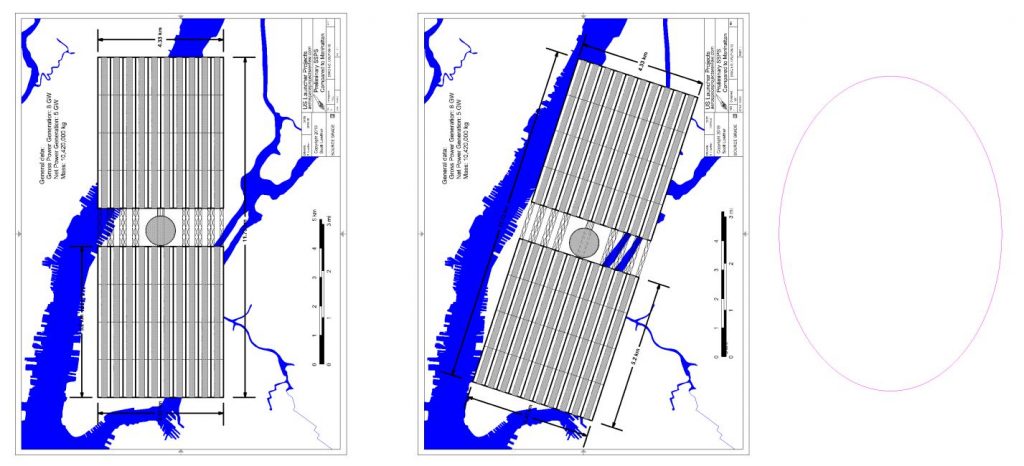Three possibilities, comparing the initial relatively dinky (dainty at less than 12 km in length) initial NASA SPS concept to Manhattan island (in a simple line drawing), to San Francisco and to the the regions around Manhattan. What looks best?
UPDATE: pretty universally the far right option was the most popular one (insert political joke HERE). A suggestion was made to rotate the SPS to align it with the island, which I’ve done below and… meh. It doesn’t really do it for me. I’ve blown up the thickness of the dimension lines. The somewhat faint ellipse at far right in the new image below is the receiver array at 45 degrees latitude. Clearly it is just about as big as the SPS itself, which at first blush might make one wonder “why go to the bother, then?” But there are a few points:
1) Size is determined by the dispersion of the microwave beam coming from a 1-km diameter emitter array in geosynchronous, *not* on the max power density it could handle. So you could potentially have a couple SPS’s beaming down to a single array.
2) Unlike a PV array the microwave receiver lets the bulk of regular light come through. it could be roughly as dense as chickenwire, meaning that you could suspend the net-like receiver over crop land, park land or water.
3) The receiver, like the SPS, works 24 hours, day and night, good weather and bad, with no need to track the sun. A ground-based PV array with the same footprint would cost a lot more than the receiver and produce much less total energy averaged out over the year.

